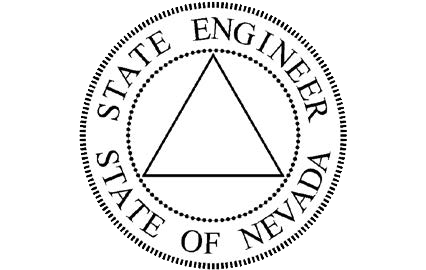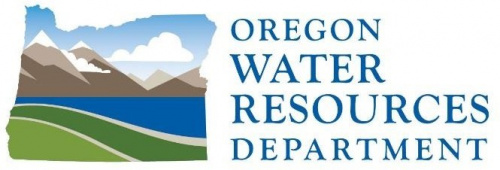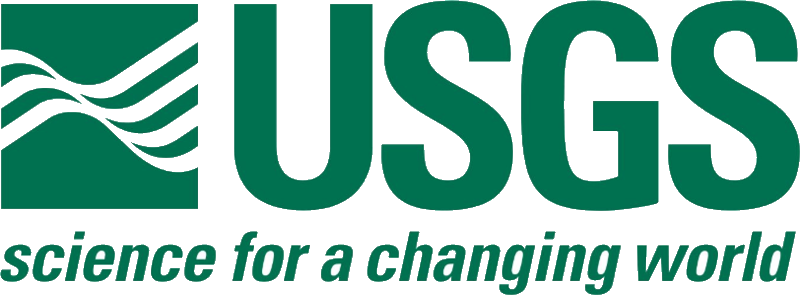Toward Field-Scale Groundwater Pumping and Improved Groundwater Management using Remote Sensing and Climate Data
Software authors/maintainers: Thomas Ott, Sayantan Majumdar
Journal: Ott, T.J., Majumdar, S., Huntington, J.L., Pearson, C., Bromley, M., Minor, B.A., ReVelle, P., Morton, C.G., Sueki, S., Beamer, J.P., & Jasoni, R.. (2024). Toward Field-Scale Groundwater Pumping and Improved Groundwater Management using Remote Sensing and Climate Data. Agricultural Water Management, 302, 109000.https://doi.org/10.1016/j.agwat.2024.109000
Groundwater overdraft in the western United States has prompted water managers to develop groundwater management plans that include mandatory reporting of groundwater pumping (GP). However, most irrigation systems in this region are not equipped with irrigation water flow meters to record GP and performing quality control of the available metered GP data is difficult due to the scarcity of reliable secondary GP estimates. We hypothesize that Landsat-based actual evapotranspiration (ET) estimates from OpenET can be used to predict GP and aid in quality control of the metered GP data. The objectives of this study are to:
- Pair OpenET estimates of consumptive use (Net ET, i.e., actual ET less effective precipitation) and metered annual GP data from Diamond Valley, Nevada, and Harney Basin, Oregon;
- Evaluate linear regression and machine learning models to establish the GP vs Net ET relationship; and
- Compare GP estimates at the field- and basin-scales.
Results from using a bootstrapping technique showed that the mean absolute errors and root mean square errors for field-scale GP depth are ∼11 % and ∼14 % across Diamond Valley and Harney Basin based on the OpenET ensemble mean, which showed the highest skill among all the OpenET ET models. Moreover, the regression models explained 50 %-70 % variance in GP depth and ∼90 % variance in GP volumes. Our GP volume estimates are also within 7% and 17% of the total reported and measured volumes in Diamond Valley and Harney Basin, respectively, and the estimated average irrigation efficiency of 87 % aligns with known center-pivot system efficiencies. Additionally, the OpenET ensemble proves to be useful for identifying discrepancies in metered GP data, which are subsequently flagged as outliers. Results from this study illustrate usefulness of satellite-based ET estimates for estimating GP and metered GP data quality control and have the potential to help estimate historical GP.
Keywords: groundwater pumping; remote sensing; evapotranspiration; irrigation; machine learning; consumptive use
Title: Nevada Water Initiative
Major Goals: The primary goals will be to estimate water use across the state associated with agriculture and natural groundwater discharge areas, and perform data collection and monitoring that will be used for water use model development and validation. These estimates will be foundational for updating groundwater withdrawals, consumptive use, water budgets, and future hydrologic modeling activities across the state. Additional activities in collaboration with Nevada Division of Water Resources (NDWR) and U.S. Geological Survey (USGS) will focus on providing climate, water use, and Geographic Information System (GIS) data and analyses to support groundwater recharge, water availability, and water demand assessments across the state, and water budget assessments in priority basins.
Agencies involved:
Installing the correct environment and running the scripts
We would like to express our gratitude for the support received from the State of Nevada / U.S. Department of the Treasury (grant number 27042), United States Geological Survey (USGS) NASA Landsat Science Team (grant number 140G0118C0007), USGS Water Resources Research Institute (grant G22AC00584-00), Desert Research Institute Maki Endowment, and Windward Fund. Our appreciation extends to the open-source software and data communities for their generosity in making their resources available to the public. We also acknowledge the invaluable contribution of the OpenET consortium and respective funding partners, Google Earth Engine, Nevada Division of Water Resources, and the Oregon Water Resources Department for providing the necessary computational resources and datasets pertaining to ET, groundwater pumping, places of use, and other shapefiles used in this research. We also extend our gratitude to Dr. Richard G. Niswonger (USGS) for his helpful suggestions on handling discrepancies in the metered pumping data and to Marty Plaskett and Mark Moyle (Diamond Valley farmers) for their interest and support in our efforts. Furthermore, we are thankful to our colleagues and families for their unwavering motivation and support throughout this endeavor. It is important to note that any opinions, findings, conclusions, or recommendations presented in this manuscript are solely those of the authors and do not necessarily reflect the viewpoints of the funding agencies.
Brookfield, A. E., Zipper, S., Kendall, A. D., Ajami, H., & Deines, J. M. (2023). Estimating Groundwater Pumping for Irrigation: A Method Comparison. Groundwater. https://doi.org/10.1111/gwat.13336
Dunkerly, C., Huntington, J.L., McEvoy, D., Morway, A., Allen, R.G., 2024. agweatherqaqc: An Interactive Python Package for Quality Assurance and Quality Control of Daily Agricultural Weather Data and Calculation of Reference Evapotranspiration. Journal of Open Source Software 9 (97), 6368. https://doi.org/10.21105/joss.06368.
Filippelli, S. K., Sloggy, M. R., Vogeler, J. C., Manning, D. T., Goemans, C., & Senay, G. B. (2022). Remote sensing of field-scale irrigation withdrawals in the central Ogallala aquifer region. Agricultural Water Management, 271, 107764. https://doi.org/10.1016/j.agwat.2022.107764
Hasan, M. F., Smith, R., Vajedian, S., Pommerenke, R., & Majumdar, S. (2023). Global land subsidence mapping reveals widespread loss of aquifer storage capacity. Nature Communications, 14(1), 6180. https://doi.org/10.1038/s41467-023-41933-z
Huntington, J., Bromley, M., Morton, C. G., & Minor, T. (2018). Remote Sensing Estimates of Evapotranspiration from Irrigated Agriculture, Northwestern Nevada and Northeastern California (DRI Publication No. 41275 prepared for the U.S. Bureau of Reclamation). https://s3-us-west-2.amazonaws.com/webfiles.dri.edu/Huntington/Huntington_et_al_2018_-_DRI_41275.pdf
Huntington, J., Gangopadhyay, S., Spears, M., Allen, R. G., King, D., Morton, C., Harrison, A., McEvoy, D., Joros, A., & Pruitt, T. (2015). West-Wide Climate Risk Assessments: Irrigation Demand and Reservoir Evaporation Projections (Technical Memorandum No. 68-68210-2014-01) (U.S. Bureau of Reclamation, Ed.). U.S. Bureau of Reclamation. https://www.usbr.gov/watersmart/baseline/docs/irrigationdemand/irrigationdemands.pdf
Huntington, J., Pearson, C., Minor, B., Volk, J., Morton, C., Melton, F., & Allen, R. (2022). Upper Colorado River Basin OpenET Intercomparison Summary: Prepared for U.S. Bureau of Reclamation. https://doi.org/10.13140/RG.2.2.21605.88808
Ketchum, D., Hoylman, Z. H., Huntington, J., Brinkerhoff, D., & Jencso, K. G. (2023). Irrigation intensification impacts sustainability of streamflow in the Western United States. Communications Earth & Environment, 4(1), 479. https://doi.org/10.1038/s43247-023-01152-2
Ketchum, D., Hoylman, Z. H., Brinkerhoff, D., Huntington, J., Maneta, M. P., Kimball, J., & Jencso, K. (2024). Irrigation response to drought in the Western United States, 1987–2021. JAWRA Journal of the American Water Resources Association. https://doi.org/10.1111/1752-1688.13190
Majumdar, S., Smith, R., Butler, J. J., & Lakshmi, V. (2020). Groundwater withdrawal prediction using integrated multitemporal remote sensing data sets and machine learning. Water Resources Research, 56(11), e2020WR028059. https://doi.org/10.1029/2020WR028059
Majumdar, S., Smith, R., Conway, B. D., & Lakshmi, V. (2022). Advancing remote sensing and machine learning‐driven frameworks for groundwater withdrawal estimation in Arizona: Linking land subsidence to groundwater withdrawals. Hydrological Processes, 36(11), e14757. https://doi.org/10.1002/hyp.14757
Majumdar, S., Smith, R. G., Hasan, M. F., Wilson, J. L., White, V. E., Bristow, E. L., Rigby, J. R., Kress, W. H., & Painter, J. A. (2024). Improving crop-specific groundwater use estimation in the Mississippi Alluvial Plain: Implications for integrated remote sensing and machine learning approaches in data-scarce regions. Journal of Hydrology: Regional Studies, 52, 101674. https://doi.org/10.1016/j.ejrh.2024.101674
Martin, D. J., Regan, R. S., Haynes, J. V., Read, A. L., Henson, W. R., Stewart, J. S., Brandt, J. T., & Niswonger, R. G. (2023). Irrigation water use reanalysis for the 2000-20 period by HUC12, month, and year for the conterminous United States: U.S. Geological Survey data release. https://doi.org/10.5066/P9YWR0OJ
Melton, F. S., Huntington, J., Grimm, R., Herring, J., Hall, M., Rollison, D., Erickson, T., Allen, R., Anderson, M., Fisher, J. B., Kilic, A., Senay, G. B., Volk, J., Hain, C., Johnson, L., Ruhoff, A., Blankenau, P., Bromley, M., Carrara, W., … Anderson, R. G. (2022). OpenET: Filling a Critical Data Gap in Water Management for the Western United States. JAWRA Journal of the American Water Resources Association. https://doi.org/10.1111/1752-1688.12956
Volk, J. M., Huntington, J. L., Melton, F. S., Allen, R., Anderson, M., Fisher, J. B., Kilic, A., Ruhoff, A., Senay, G. B., Minor, B., Morton, C., Ott, T., Johnson, L., Comini de Andrade, B., Carrara, W., Doherty, C. T., Dunkerly, C., Friedrichs, M., Guzman, A., … Yang, Y. (2024). Assessing the accuracy of OpenET satellite-based evapotranspiration data to support water resource and land management applications. Nature Water. https://doi.org/10.1038/s44221-023-00181-7





